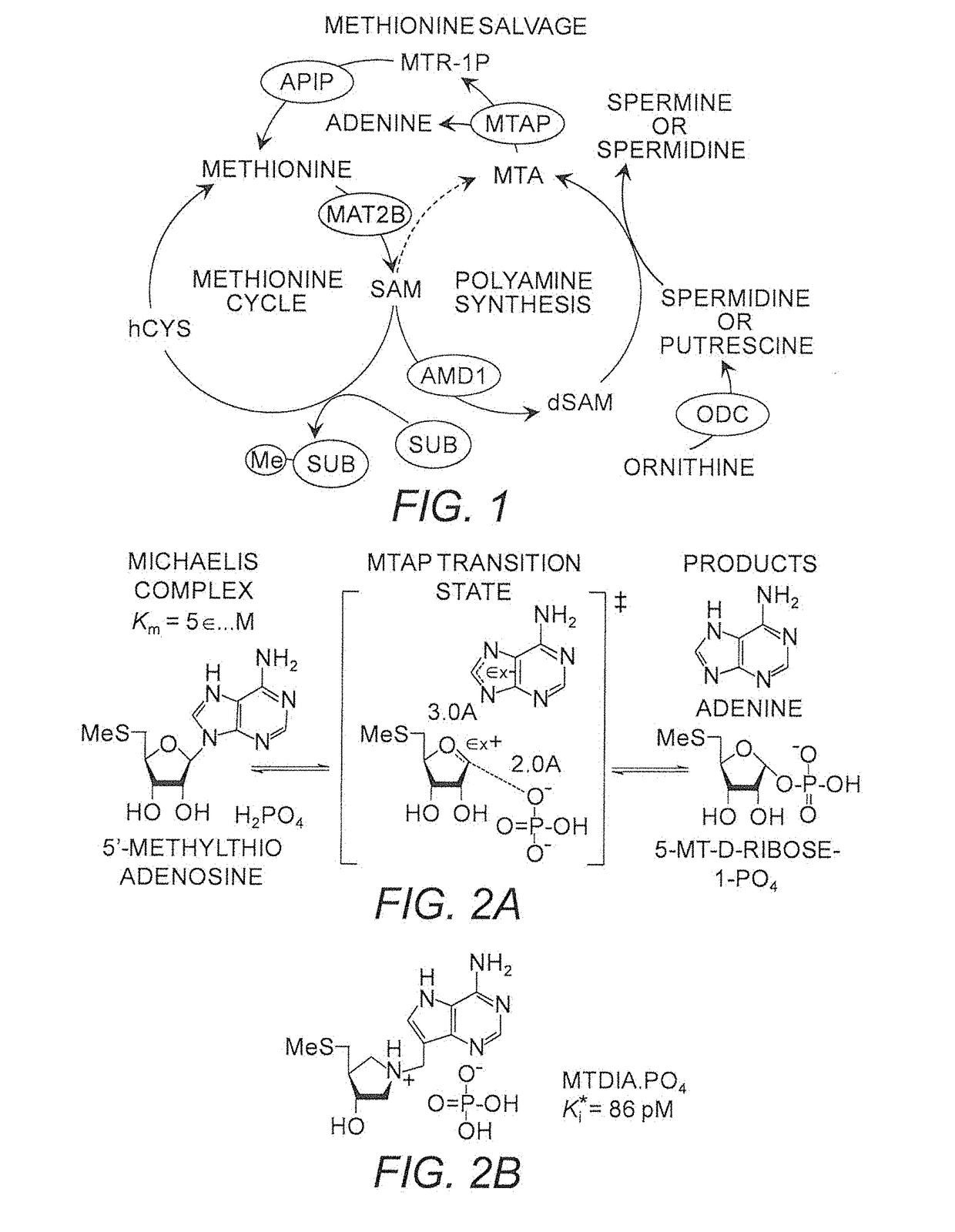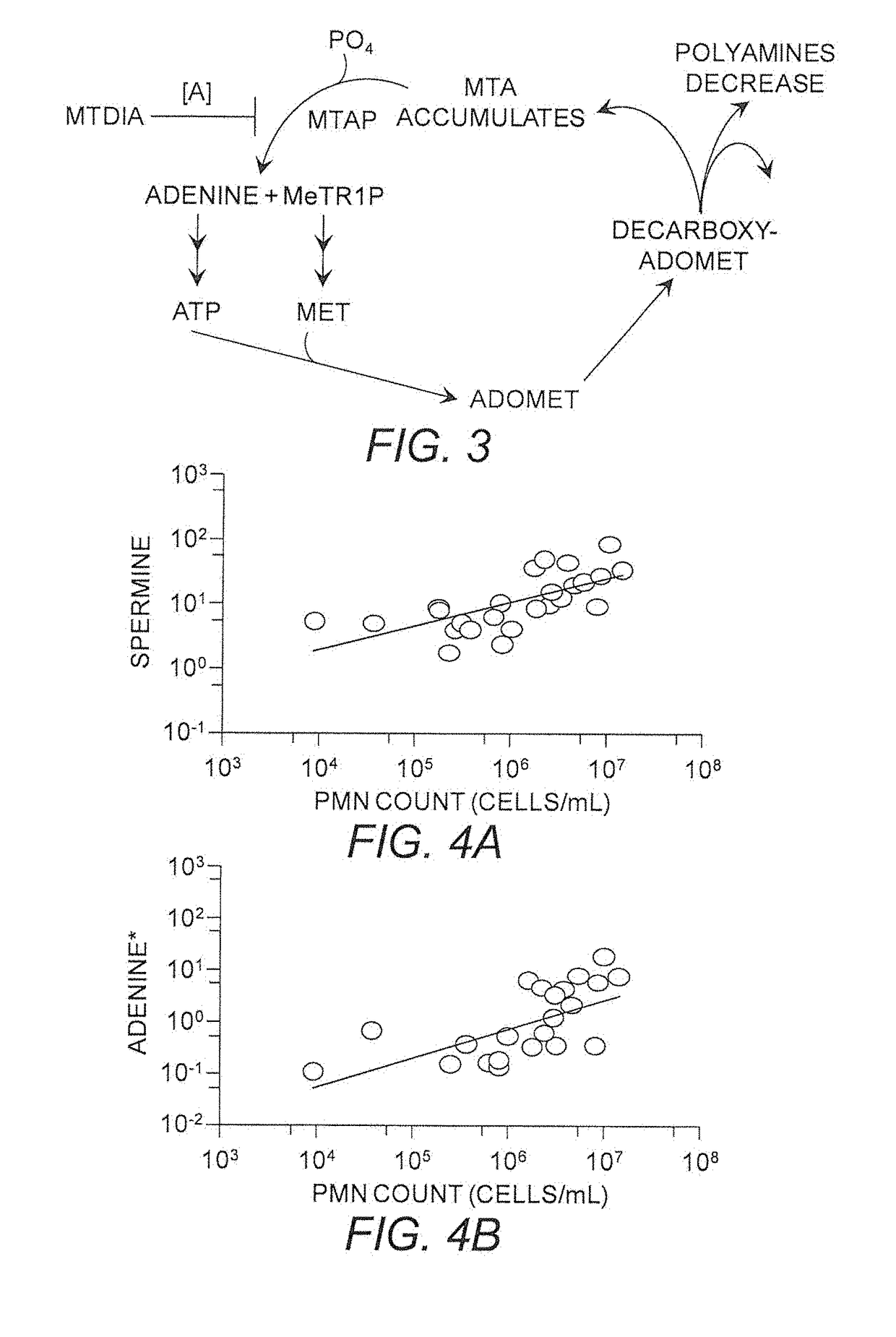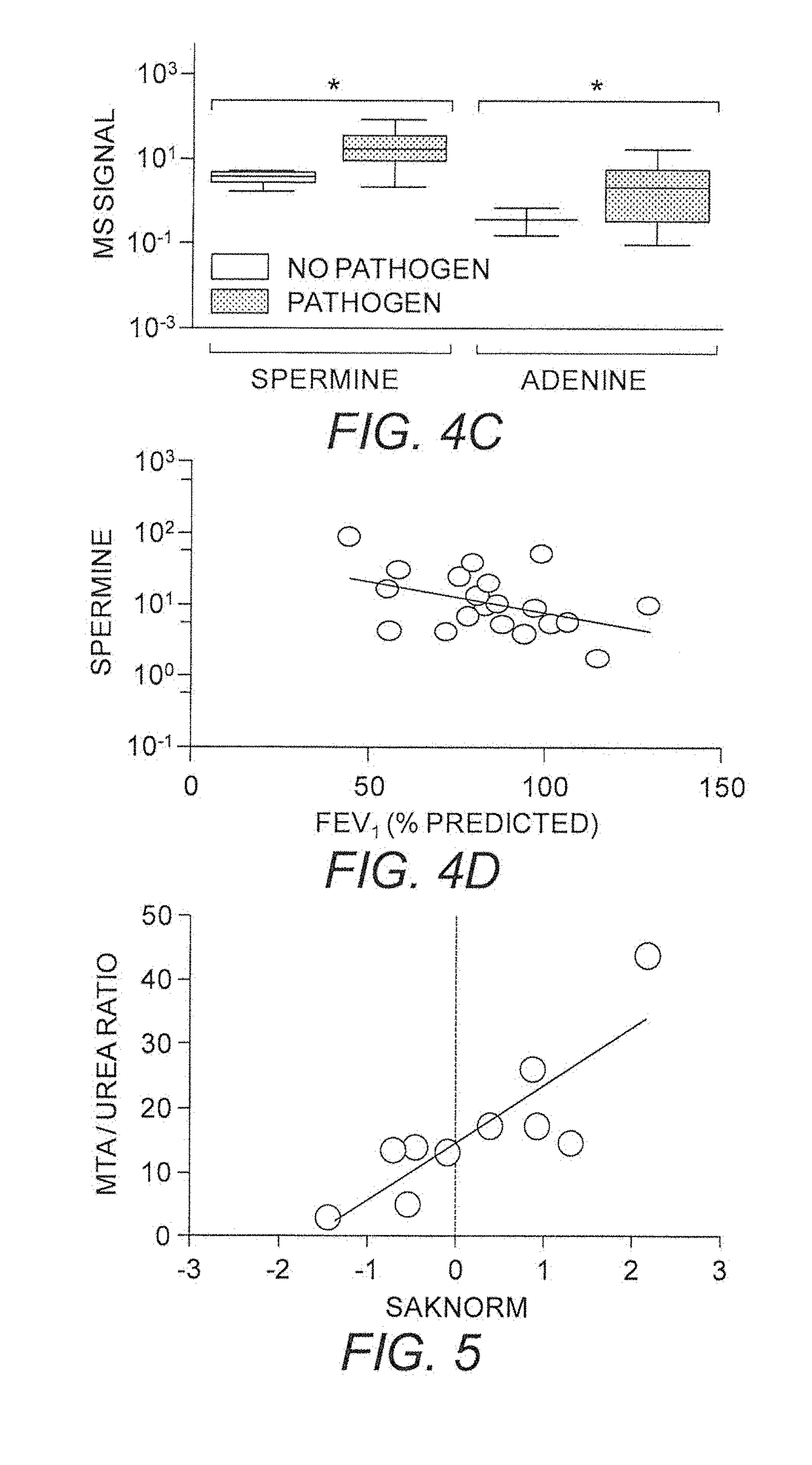Use of MTAP Inhibitors for the Treatment of Lung Disease
a technology of methylthioadenosine phosphorylase and inhibitors, which is applied in the field of 5′methylthioadenosine phosphorylase inhibitors, can solve the problems of few clinical trials and few morbidity and mortality, and achieve the effects of increasing the levels of mta in the lungs, inhibiting mta metabolism, and increasing the level of endogenous mta
- Summary
- Abstract
- Description
- Claims
- Application Information
AI Technical Summary
Benefits of technology
Problems solved by technology
Method used
Image
Examples
example 1
MTA Modulates Inflammatory Response
[0420]The potent anti-inflammatory profile of MTA has been demonstrated in a number of models. In lipopolysaccharide (LPS) challenged mice, MTA markedly reduced serum levels of the pro-inflammatory tumor necrosis factor-alpha (TNF-α) and stimulated production of the anti-inflammatory cytokine interleukin-10. Cell based LPS inflammation models have shown MTA to inhibit induction of p38 Mitogen Activated Protein Kinase (MAPK), c-Jun phosphorylation and Inhibitors of Kappa Balpha (IKBα) degradation. Concomitant reduction of Nuclear Factor-KB (NFKB) activation was also observed. Each of these pathways is associated with the modulation of inflammatory mediators and supports the role of MTA as promoting an anti-inflammatory state. A rat model of ischemia / reperfusion injury following liver transplant emulates the LPS results with notable suppression of NFKB and MAPK pathways observed. The use of MTA alone as a therapeutic for CF has limited utility becaus...
example 2
MTDIA Blocks MTA Metabolism at MTAP
[0421]Oral doses of MTDIA block MTA metabolism at MTAP, which causes whole-body accumulation of MTA and simultaneous disruption of polyamine synthesis (FIG. 3). MTDIA inhibits MTAP, the sole enzyme responsible for MTA recycling, with picomolar affinity and a high level of specificity. An oral or i.p. dose of MTDIA inhibits MTAP activity in vivo for >24 h, causes MTA accumulation in plasma to >100-fold higher than baseline levels and ˜2-fold decrease in polyamine concentrations.
[0422]MTDIA was designed and synthesized as a chemically stable analogue for the proposed transition state of human MTAP (Ki*=86 μM). MTDIA has high specificity and affinity for MTAP, displaying minimal off-target effects in protein receptor and kinase panels. Therapeutically relevant concentrations (FIG. 7A) of MTDIA (100 μM) or MTA (1.2 μM) returned selectivity (S) scores of 0 and 0.008 (S=number of hits / number of assays) respectively in a KINOMEscan™ kinase screening assay...
example 3
MTDIA Pharmacokinetics (PK) / Pharmacodynamics (PD)
[0423]Following an oral or i.p. dose (15 mg / kg) in CD-1 mice, the concentration of MTDIA in plasma peaks after 1 hr at nearly 0.1 μM (FIG. 7A). This concentration is approximately 1,000-fold higher than the Ki* of MTDIA (86 pM) for human MTAP. MTDIA (15 mg / kg) causes plasma MTA levels in mice to increase >100-fold (FIG. 7B) after 30 min, and urinary MTA to increase to approximately 30 μM. The catalytic activity of MTAP in mouse serum is completely inhibited for 24 hr after a single oral dose (15 mg / kg) and returns to normal within 36 hr. MTDIA was found to be metabolically stable for over 4 hr during in vitro studies with human hepatocytes and microsomes. These findings demonstrate that MTDIA is orally available and metabolically stable.
PUM
| Property | Measurement | Unit |
|---|---|---|
| Time | aaaaa | aaaaa |
Abstract
Description
Claims
Application Information
 Login to View More
Login to View More - R&D
- Intellectual Property
- Life Sciences
- Materials
- Tech Scout
- Unparalleled Data Quality
- Higher Quality Content
- 60% Fewer Hallucinations
Browse by: Latest US Patents, China's latest patents, Technical Efficacy Thesaurus, Application Domain, Technology Topic, Popular Technical Reports.
© 2025 PatSnap. All rights reserved.Legal|Privacy policy|Modern Slavery Act Transparency Statement|Sitemap|About US| Contact US: help@patsnap.com



